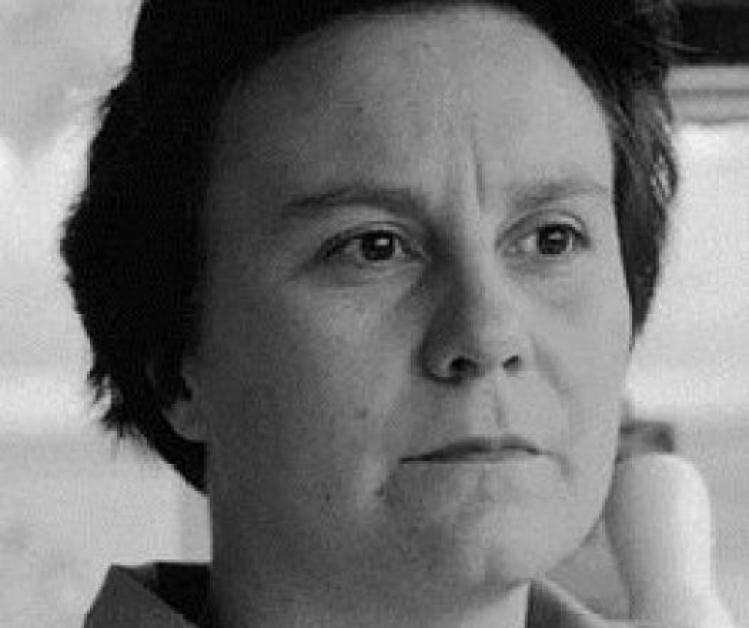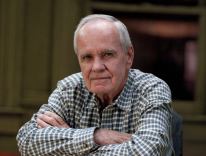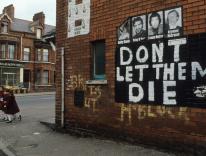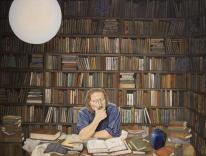
Harper (appropriately) has unleashed a two-million-copy first printing of Harper Lee’s second-to-be-published novel, Go Set a Watchman, and in doing so has removed her from a unique group—the ninety or so celebrated authors who have published just a single novel.
Lee said years ago that she did not intend to publish another work, and we know that Go Set a Watchman was rejected by her editors both before and after To Kill a Mockingbird was published (she had also spent several years working on a novel called The Long Goodbye but eventually abandoned it). Even if her new publication gives us pleasure, I would prefer to remember her as the author of a single towering achievement, a member of one of the most unusual groupings in literary history.
[See a list of notable one-novel novelists below.]
The reasons for each one-novel novelist’s fame vary. Sometimes it’s distinction in other fields. For instance, several politicians are in the club -- Napoleon (Clisson et Eugénie), Winston Churchill (Savrola), Georges Clemenceau (Les Plus Fortes), Francisco Franco (Race), Joseph Goebbels (Michael), and Benito Mussolini (The Cardinal’s Mistress).
Napoleon, Churchill, Goebbels, and Mussolini each wrote his novel early in his career, the latter in 1909 in serial form when working for a popular Socialist newssheet, each episode written by lamplight after the main day’s work was over. When the full novel was published in English, Dorothy Parker wrote: “This is not a book to be set aside lightly; it should be thrown, with great force.” There are good reasons why some authors stopped writing fiction when they did.
The world of entertainment has had its share of one-offs: Sarah Bernhardt, Noel Coward, Errol Flynn, Jean Harlow, Michael Redgrave, and Orson Welles all tried their hand, as did the singers Bob Dylan and Woody Guthrie. Artists Aubrey Beardsley and Salvador Dali also wrote a single novel.
Then there are the ancients: Apuleius, Heliodorus, Longus, Petronius, Achilles Tatius. In most cases, our knowledge of their output is limited—we can make only an informed guess based on the single novel that has come down to us.
The largest group of one-off novelists are those whose creative talents are in other art forms: short-story writers such as Michael Arlen, Alice Munro, Edgar Allan Poe, J.D. Salinger, or poets like Walt Whitman, John Ashberry, John Berryman, Randall Jarrell, Boris Pasternak, and Edward Thomas (though Thomas died young, in World War I).
Then there are the dramatists: Brendan Behan, Berthold Brecht, William Congreve, Oliver Goldsmith, Arthur Miller, Joe Orton, Harold Pinter, Tom Stoppard, and Oscar Wilde. Of these, Goldsmith’s The Vicar of Wakefield and Wilde’s The Picture of Dorian Gray are the two classics, although Miller’s Focus, written in 1945 to battle American anti-Semitism, is a powerful work on a theme that he felt could be fully explored only in novel form.
Several essayists had one novel published—Max Beerbohm, Harold Bloom, Cyril Connelly, G.V. Desani, William Empson, Herbert Read, Allen Tate, and Lionel Trilling—but not always from want of trying. Read started several works of fiction, recording that “the only occupation to which a serious man could seriously put himself was the writing of novels,” while after Connelly died no fewer than six unfinished novels were discovered in his flat. As his biographer Michael Sheldon noted, “He was prodded along by a passionate desire to join the ranks of great novelists, but it was impossible for him to keep his fundamental weaknesses as a novelist from his sharp critic’s eye.”
Some single novels are by a jacks-of-all-trades group that defies categorization: Elias Canetti, Primo Levi, Samuel Johnson, Voltaire. There’s a scientist (Carl Sagan); a sportsman (C.B. Fry); an army officer (Pierre Choderlos de Laclos); religious figures (Dorothy Day, Thomas Merton, and John Henry Newman); a biographer (Michael Holroyd); a journalist duo (George and Weedon Grossmith); a diarist (Samuel Pepys); a travel writer (Patrick Leigh Fermor); a politician (Benjamin Constant); and a would-be politician who may yet write another novel (Arundhati Roy).
Harper Lee herself belongs to a group that suffered from writer’s block: Margaret Mitchell and Ralph Ellison both found it difficult to write again after the huge success of their first novels. Mitchell was fatally hit by a car when she was forty-nine, but by then she was so overcome by fame she was never likely to write again. (After her death, her estate dredged up a second novel, Lost Laysen, written when Mitchell was just sixteen: it proved a curiosity that did nothing for her reputation.)
The last category takes in those who either worked in secret to produce a novel that was published only after their death (Giuseppe Tomasi di Lampedusa, Robert Tressell), or who labored on their one full-length work of fiction for many years, like Marcel Proust or Alessandro Manzoni, who actually published three different versions of The Betrothed over his lifetime (Verdi wrote his Requiem for Manzoni’s funeral).
What is one to make of this extraordinary list, which includes almost thirty classics of world literature? No other art form can compare. In classical music, there’s a theory called the “one violin concerto principle,” which is—Mozart apart—that no composer ever managed more. Beethoven wrote a single opera, and Cesar Franck one symphony, but such examples are scarce. Even fewer examples exist of a one-off play (Picasso wrote one!), or film (about thirty one-film directors, but no more than a couple—Brando, Laughton—of any worth). As for a single painting, the nearest one gets is Michelangelo, who attempted only twice a painting in oil—“Oil painting is for women,” he scoffed. Poetry is almost a non-starter, with The Divine Comedy and Leaves of Grass coming closest, but both Dante and Whitman wrote other books of poems.
No, one-novel novelists present a mystery. Most writers mature as their careers continue, but if a first novel is produced in maturity—Lampedusa, Pasternak—the novelist may have nothing more to say. The published novel may be the product of a lifetime’s striving.
Many of those on the list were writers by trade or vocation and contributed in other genres. Literary fashions also count, influencing writers to take up or abandon a particular form. If someone’s first novel is a great success, does that make future novels more difficult? Sometimes an author might have written more, but died early: Emily Bronte, Erskine Childers, Alain-Fournier, Sylvia Plath, and Mikhail Lermontov are the best known. But there is still the feeling that Herbert Read articulated: writing at least one novel entitles you to enter a privileged group engaged in a vital enterprise. Being a novelist is special, a siren calling.
Which leaves me thinking that, although her thousands of fans will be delighted to pick up her new novel (if they can stomach the notion of Atticus Finch being a racist in his old age), it is a little sad that Harper Lee is vacating this special club.
One-Novel Novelists of Note
(An asterisk indicates that though there is no evidence of an author having written more than one novel, neither is there definitive proof that he hasn’t.)
Lucius Apuleius, The Golden Ass
Michael Arlen, The Green Hat
Aubrey Beardsley, Under the Hill
Brendan Behan, The Scarperer
Sarah Bernhardt, The Idol of Paris
John Berryman, Recovery
Max Beerbohm, Zuleika Dobson
Harold Bloom, The Flight to Lucifer
Napoleon Bonaparte, Clisson et Eugénie (Most often referred to as a novella. In published form, it is seventy-seven pages long, much and of that is padding.)
Howard Brenton, Diving for Pearls
Berthold Brecht, Threepenny Novel (This 1934 book by Brecht was first published as Dreigroschenroman. It is similar in structure to The Threepenny Opera and features several of the same characters.)
Emily Bronte, Wuthering Heights
Elias Canetti, Auto da Fe
Robert Erskine Childers, The Riddle of the Sands
William Congreve, Incognita, or Love and Duty Reconciled
Frank Conroy, Body and Soul
Benjamin Constant, Adolphe
Noel Coward, Pomp and Circumstance
Winston Churchill, Savrola
Georges Clemenceau, Les Plus Fortes
Cyril Connolly, The Rock Pool
Salvador Dali, Hidden Faces (Rostros Ocultos)
Dorothy Day, The Eleventh Virgin
G.V. Desani, All About H. Hatterr
Bob Dylan, Tarantula (Can one call this a novel? It’s a piece of extended prose in the William Burroughs tradition, but... . The majority of the book is written in a style of a prose poem, closing with a written letter signed by some character from Dylan's imagination. Little of it is literal; it is almost wholly written in the rambling, seeming stream-of-consciousness style that Dylan introduced in his prose poems. He was highly into writing allegorical fables at the time of composition, and this book abounds in them.)
G.B. Edwards, The Book of Ebenezer Le Page
A. E. Ellis,The Rack
Ralph Ellison, Invisible Man
William Empson, The Royal Beasts
Richard Farina, Been Down So Long It Looks Like Up to Me
Michael Farrell, They Tears Might Cease
Patrick Leigh Fermor, The Violins of Saint Jacques
Errol Flynn, Showdown
Alain-Fournier, Le Grand Meaulnes
Francisco Franco, Race (Raza)
C.B. Fry, A Mother’s Son
Joseph Goebbels, Michael
Oliver Goldsmith, The Vicar of Wakefield
George and Weedon Grossmith, The Diary of a Nobody
Woody Guthrie, House of Earth
Jean Harlow, Today Is Tonight
William Curtis Hayward, It Never Gets Dark All Night
Heliodorus, Aethiopica
James Hogg, The Private Memoirs and Confessions of a Justified Sinner*
Michael Holroyd, A Dog’s Life
Randall Jarrell, Pictures from an Institution
Samuel Johnson, Rasselas
Pierre Choderlos de Laclos, Les Liaisons Dangereuses
Giuseppe Tomasi, Prince of Lampedusa, The Leopard (Il Gattapardo)
Mikhail Lermentov, A Hero of Our Time
Ross Lockridge, Jr., Raintree County
Longus, Daphne and Chloe
Alessandro Manzoni, The Betrothed
Josef Mengele, Title Unknown*
Thomas Merton, My Argument with the Gestapo
Margaret Mitchell, Gone With the Wind
Arthur Miller, Focus
Alice Munro, Lives of Girls and Women
Benito Mussolini, The Cardinal’s Mistress
John Henry (Cardinal) Newman, Loss and Gain
Joe Orton, Head to Toe
Boris Pasternak, Dr. Zhivago
Samuel Pepys, Love a Cheat
Caius Petronius, Saturae (The Satyricon)
Harold Pinter, The Dwarfs
Sylvia Plath, The Bell Jar
Edgar Allan Poe, The Narrative of Arthur Gordon Pym of Nantucket (The book has defied a universally accepted interpretation. Scholar Scott Peeples wrote that it is “at once a mock nonfictional exploration narrative, adventure saga, bildungsroman, hoax, largely plagiarized travelogue, and spiritual allegory” and “one of the most elusive major texts of American literature.” Generally, though, it’s called a novel.)
Marcel Proust, A la recherche du temps perdu
Herbert Read, The Green Child
Michael Redgrave, The Mountebank’s Tale
Arundhati Roy, The God of Small Things (Just fifty-three, Roy may well write more novels. So far it’s just one, though—a winner of the Booker Prize in 1997—and she is mainly a political activist now.)
Carl Sagan, Contact
H.F. Saint, Memoirs of an Invisible Man
J.D. Salinger, The Catcher in the Rye
Anna Sewell, Black Beauty
Tom Stoppard, Lord Malquist and Mr. Moon
Allen Tate, The Fathers
Achilles Tatius, The adventures of Leucippe and Cheitophlon
Edward Thomas, The Happy-Go-Lucky Morgans
Robert Tressell, The Ragged Trousered Philanthropists
Lionel Trilling, The Middle of the Journey
Voltaire (François Marie Arounet), Candide
Orson Welles, Mr. Arkadin (The book began as a radio series, then became a film, and then a novel. As a work of prose fiction, Mr. Arkadin was first published in French, in Paris in 1955; then in English in 1956, both in London and New York. Welles was credited as author, but later said: “I didn't write one word of that novel. Nor have I ever read it. Somebody wrote it in French to be published in serial form in the newspapers. You know — to promote the picture. I don't know how it got under hardcovers, or who got paid for that.”)
Walt Whitman, Franklin Evans, or The Inebriate
Oscar Wilde, The Picture of Dorian Gray
Richard Wolheim, A Family Romance
Jacques Yonnet, Paris Noir
_______________________________________________________________________________
Both the original article and the list have been updated to include a few overlooked examples.
Please email comments to [email protected] and join the conversation on our Facebook page.
Previous Story
Capitalists to Pope Francis: What about us?
Next Story
Leaving the Club


